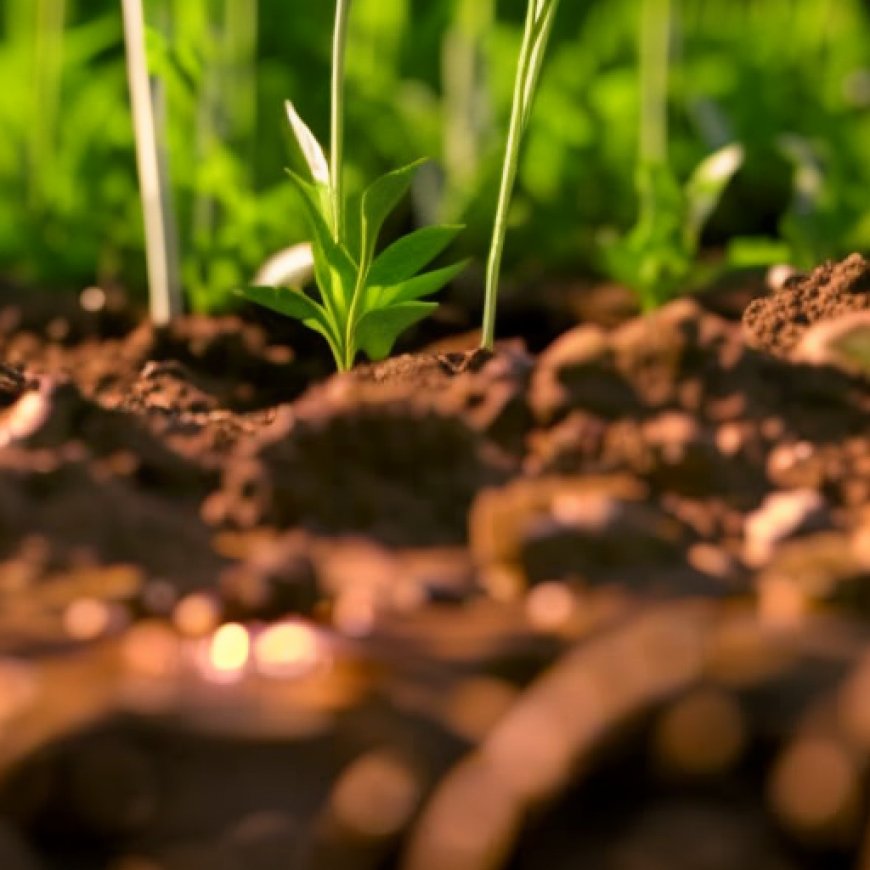Regenerative agriculture shows potential for British Columbia drought resilience
Regenerative agriculture shows potential for British Columbia drought resilience Environmental Health News


A Swiss-born farmer in British Columbia demonstrates how regenerative agricultural practices can boost resilience to extreme drought conditions that increasingly threaten regional food security.
Matt Simmons reports for The Narwhal.
In short:
- Farmers in Western Canada are turning to regenerative agriculture to combat severe drought conditions, utilizing techniques that enhance soil health and water retention.
- These sustainable practices, such as minimal tillage and no chemical fertilizers, have proven essential in maintaining productivity during extreme weather.
- Efforts are supported by provincial initiatives, including funding for water storage systems, to aid farmers in adapting to changing climate conditions.
Key quote:
“If I treat the land right, it will feed me better. Healthy soil, healthy plants, healthy animals, healthy people. Simple.”
— Eugen Wittwer, farmer
Why this matters:
As climate change accelerates, sustainable agricultural practices that preserve soil moisture and biodiversity are crucial for securing the future of food production. Addressing drought through regenerative farming not only secures food production but also builds resilience against climate change impacts. Read more: The global food system is failing small-scale farmers — here’s how to fix it.
SDGs, Targets, and Indicators
| SDGs | Targets | Indicators |
|---|---|---|
| SDG 2: Zero Hunger | 2.4: By 2030, ensure sustainable food production systems and implement resilient agricultural practices that increase productivity and production, that help maintain ecosystems, that strengthen capacity for adaptation to climate change, extreme weather, drought, flooding and other disasters, and that progressively improve land and soil quality. | – Utilization of regenerative agricultural practices – Enhancement of soil health and water retention – Minimal tillage and no chemical fertilizers |
| SDG 13: Climate Action | 13.1: Strengthen resilience and adaptive capacity to climate-related hazards and natural disasters in all countries. | – Adoption of regenerative agriculture techniques to combat severe drought conditions – Support from provincial initiatives for adapting to changing climate conditions |
1. Which SDGs are addressed or connected to the issues highlighted in the article?
The SDGs addressed or connected to the issues highlighted in the article are SDG 2: Zero Hunger and SDG 13: Climate Action.
2. What specific targets under those SDGs can be identified based on the article’s content?
Based on the article’s content, the specific targets under SDG 2: Zero Hunger are target 2.4, which focuses on sustainable food production systems and resilient agricultural practices. Under SDG 13: Climate Action, the specific target is target 13.1, which aims to strengthen resilience and adaptive capacity to climate-related hazards and natural disasters.
3. Are there any indicators mentioned or implied in the article that can be used to measure progress towards the identified targets?
Yes, there are indicators mentioned or implied in the article that can be used to measure progress towards the identified targets. These indicators include the utilization of regenerative agricultural practices, enhancement of soil health and water retention, minimal tillage, no chemical fertilizers, adoption of regenerative agriculture techniques to combat severe drought conditions, and support from provincial initiatives for adapting to changing climate conditions.
4. SDGs, Targets, and Indicators
| SDGs | Targets | Indicators |
|---|---|---|
| SDG 2: Zero Hunger | 2.4: By 2030, ensure sustainable food production systems and implement resilient agricultural practices that increase productivity and production, that help maintain ecosystems, that strengthen capacity for adaptation to climate change, extreme weather, drought, flooding and other disasters, and that progressively improve land and soil quality. | – Utilization of regenerative agricultural practices – Enhancement of soil health and water retention – Minimal tillage and no chemical fertilizers |
| SDG 13: Climate Action | 13.1: Strengthen resilience and adaptive capacity to climate-related hazards and natural disasters in all countries. | – Adoption of regenerative agriculture techniques to combat severe drought conditions – Support from provincial initiatives for adapting to changing climate conditions |
Copyright: Dive into this article, curated with care by SDG Investors Inc. Our advanced AI technology searches through vast amounts of data to spotlight how we are all moving forward with the Sustainable Development Goals. While we own the rights to this content, we invite you to share it to help spread knowledge and spark action on the SDGs.
Fuente: ehn.org

Join us, as fellow seekers of change, on a transformative journey at https://sdgtalks.ai/welcome, where you can become a member and actively contribute to shaping a brighter future.







